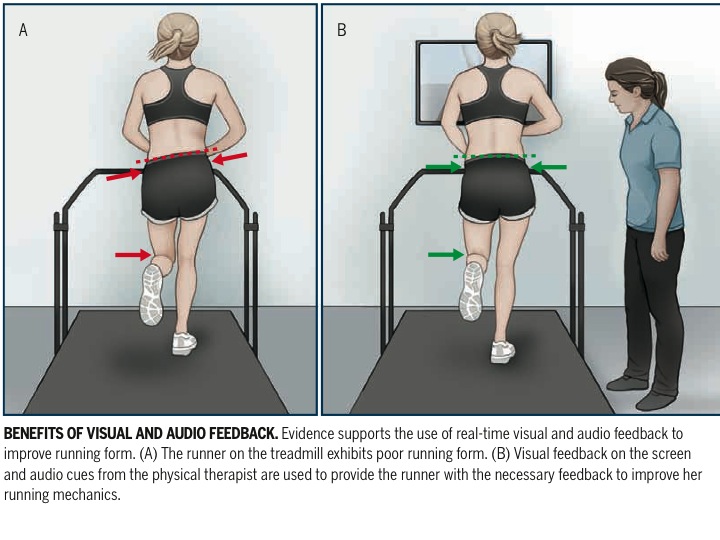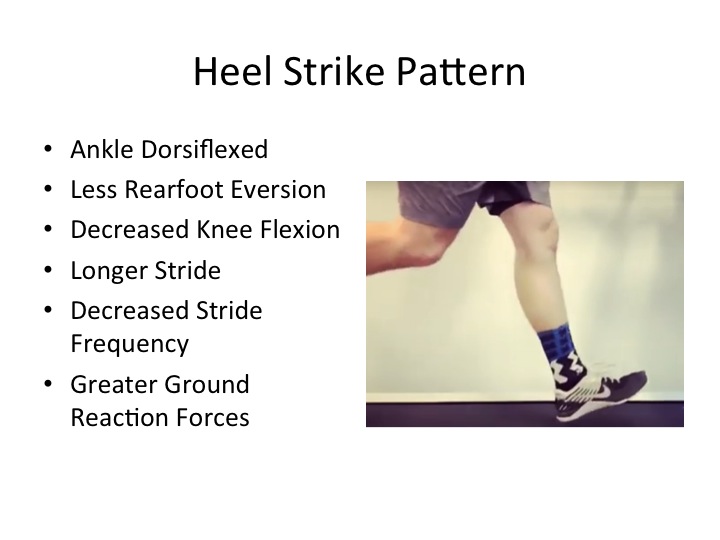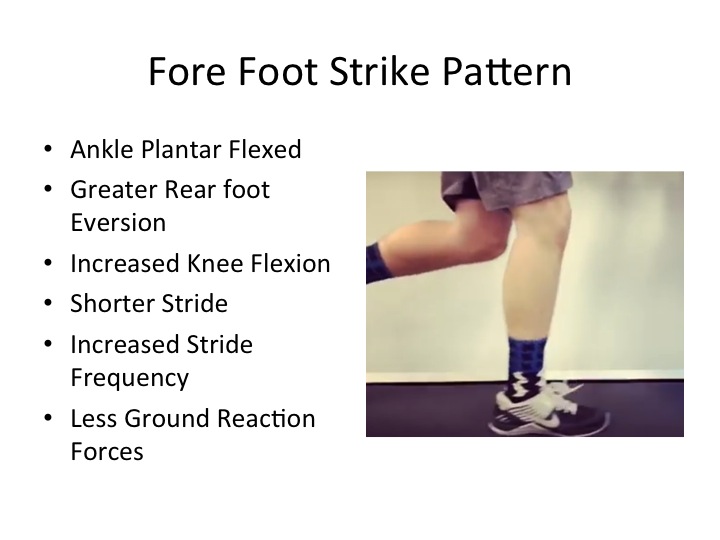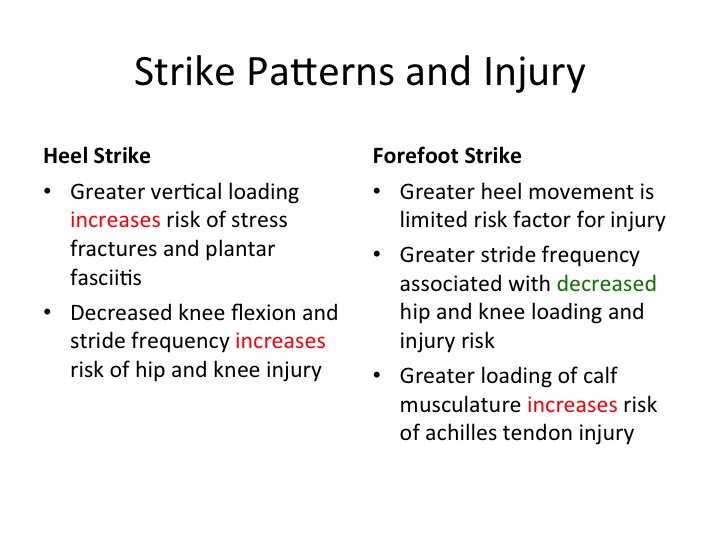Running Mechanics
Running is one of the most common forms of exercise and has grown in popularity as evidenced by the wide range of age and ability levels running in Boulder County. Unfortunately, injuries effect a significant number of athletes with up to 90% reporting a prior injury(1). The vast majority of these injuries are over use in nature including plantar fasciosis, achilles tendonosis, or shin pain. The high number of injuries associated with running has driven many researchers and clinicians to search for effective methods to reduce injury risk among runners. In particular, recent evidence has documented the effectiveness of real time feedback provided by Physical Therapists in reducing pain and improving running form(2). One aspect a Physical Therapist may examine is the strike pattern of a runner and how this impacts the biomechanics of the lower quarter for both injury risk and performance.
A recent systematic review of the literature gathered evidence to quantify the biomechanics occurring at the lower extremity with different foot strike patterns. Almeida et al. and colleagues reviewed the literature on foot strike patterns during running to compare and contrast the changes noted in fore and rear foot strikers (3).
These two pictures above demonstrate the relative changes in lower extremity joint range of motion and loading between the two strike patterns in runners. Each strike pattern can be associated with different injuries in the lower extremity (detailed below) based on impact forces during running. Also of importance would be the frequency of the stride. Runners with a slower stride frequency would spend a higher relative time in stance phase and thus have a greater transmission of forces through the lower quarter.
In conclusion, a runner’s form is largely self selected and there is not a “perfect” running form, but knowing the biomechanics of the two strike patterns can influence decision making for improving performance and reducing injury risk.
References
1. Yamato TP, Saragiotto BT, Hespanhol Junior LC, Yeung SS, Lopes AD. Descriptors used to define running-related musculoskeletal injury: a systematic review. J Orthop Sports Phys Ther. 2015;45:366-374. 10.2519/jospt.2015.5750
2. Agresta, C. et al. Gait retraining for injured and healthy runners using augmented feedback. A systematic literature review. JOSPT. 2015. 45(8):576-584.
3. Almeida, A. et al. Biomechanical differences of foot strike patterns during running: A systematic review with meta analysis. JOSPT. 2015.




